I have datasets that look like the following: data0, data1, data2 (analogous to time versus voltage data)
If I load and plot the datasets using code like:
import pandas as pd
import numpy as np
from scipy import signal
from matplotlib import pylab as plt
data0 = pd.read_csv('data0.csv')
data1 = pd.read_csv('data1.csv')
data2 = pd.read_csv('data2.csv')
plt.plot(data0.x, data0.y, data1.x, data1.y, data2.x, data2.y)
I get something like:

now I try to correlate data0 with data1:
shft01 = np.argmax(signal.correlate(data0.y, data1.y)) - len(data1.y)
print shft01
plt.figure()
plt.plot(data0.x, data0.y,
data1.x.shift(-shft01), data1.y)
fig = plt.gcf()
with output:
-99
and

which works just as expected! but if I try it the same thing with data2, I get a plot that looks like:

with a positive shift of 410. I think I am just not understanding how pd.shift() works, but I was hoping that I could use pd.shift() to align my data sets. As far as I understand, the return from correlate() tells me how far off my data sets are, so I should be able to use shift to overlap them.
